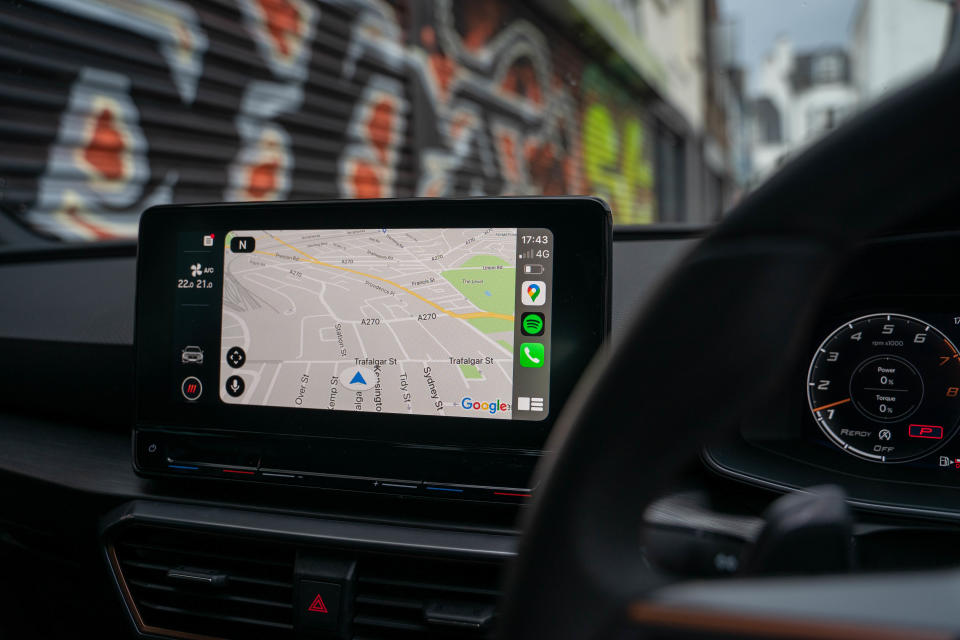Long-term report: Finding our feet with the Cupra Leon Estate
Cupra is on a bit of a roll at the moment, isn’t it? It’s already put out its first ground-up model – the Formentor – and soon it’ll be entering into the flourishing EV segment with its first battery-powered model, called Born. Gone are the days, it seems, of just making go-faster Seat models.
So you can probably see why I was a little confused by ‘our’ long-term Cupra Leon Estate which is, ahem, a go-faster version of an existing Seat model. But the Leon has been such a crucial car for Cupra – and Seat, of course – for so many years that you can understand why they’d make a new one.

I got a good stint in the Cupra recently after wrestling the keys off a colleague. Now I usually run a long-term Skoda Octavia vRS and despite both that car and the Leon sharing a similar platform, there are some noticeable yet important differences.
For one, there’s the power. Though the pair both use a 2.0-litre turbocharged petrol engine, the Cupra is significantly punchier. Its 306bhp distinctly trumps the 242bhp you get from the Octavia, but thankfully the Leon has four-wheel-drive on its side to help translate that power to the road.
The effect is that you get a lot of extra security and that’s no bad thing when the roads are as wet and as slippery as they are at the moment. You get a nice seven-speed automatic, too, and though it’s linked to steering wheel paddles that I find frustratingly short, it’s smooth shifting and best left to its own devices.

Much like the Skoda, the Leon is also a victim of slightly over-the-top engine ‘sounds’. In full-fat ‘Cupra’ driving mode I find it to be a little over the top, booming away in the background. Fortunately, you can switch it off should you need to.
But I do like the look of it. I personally love an under-the-radar performance estate car and, in its silver paint with relatively discrete wheels, it’s definitely a hard one to pick out against the regular Leon estate. They’ve left a couple of interesting touches in there, mind you, like the quad exhaust pipes and intricate front grille, which do help to keep things looking lively.

The interior is pretty smart too. It’s got the same basic architecture as the Skoda, but it adopts a far more button-free layout, more like the one you find on the latest Golf. I find it a little bit counter-intuitive, particularly when you have to delve into menus in order to do simple things like switch the blowers on to clear the screen. Oddly, this car also has a heated steering wheel – a great feature in the winter – but no heated seats. Usually, it’s the other way around, but the Cupra seems to shun this precedent.
It’s a fearsomely quick car, mind you. With zero to 60mph coming in well under five seconds, it’s far more rapid than you might expect a car of this type to be and undertakes the job of accelerating with such little drama that it’s almost too easy. The four-wheel-drive system also means that it flings itself out of corners, again with very little protest from the tyres.

It also feels like quite a compact car around you, so you’re not worried about overhangs. The steering is surprisingly light, too, though you can add extra weight to it via the driver modes should you desire. In its standard setting the steering is far lighter than the performance on offer would lead you to believe – quicker cars often get heavier steering to make added power feel more approachable – but the Leon’s feels almost as light as the regular car’s. This is good for when travelling at low speeds, but a little disconcerting when you’re moving more quickly.
It feels like a great car for longer journeys, mind you. This Cupra is fitted with Dynamic Chassis Control which allows you to taper how soft or firm the car’s ride is depending on your liking or the driving conditions. For me, it’s always straight in the softest setting. I just prefer having a little extra pliancy there, particularly given how broken and unsettled a lot of the roads are at the moment.
This VZ2-specification car sits on 19-inch machined alloy wheels, too, so there ain’t a lot of give there – being able to soften the suspension off makes a huge difference to the overall feel of the car.
Overall, it’s a very interesting performance car. Certainly, the all-wheel-drive system brings a multitude of bonuses, but as we’ve seen on other similar models this does come slightly at the detriment to outright involvement. For me, the positives outweigh the negatives with the Cupra. I might just have to steal the keys a little more often.
Model as tested: Cupra Leon Estate VZ2
Price (as tested): £39,110
Engine: 2.0-litre petrol
Power: 306bhp
Torque: 400Nm
Max speed: 155mph
0-60mph: 4.7 seconds
MPG: 32.8 - 34.4
Emissions: 186g/km CO2

 Yahoo Finance
Yahoo Finance 